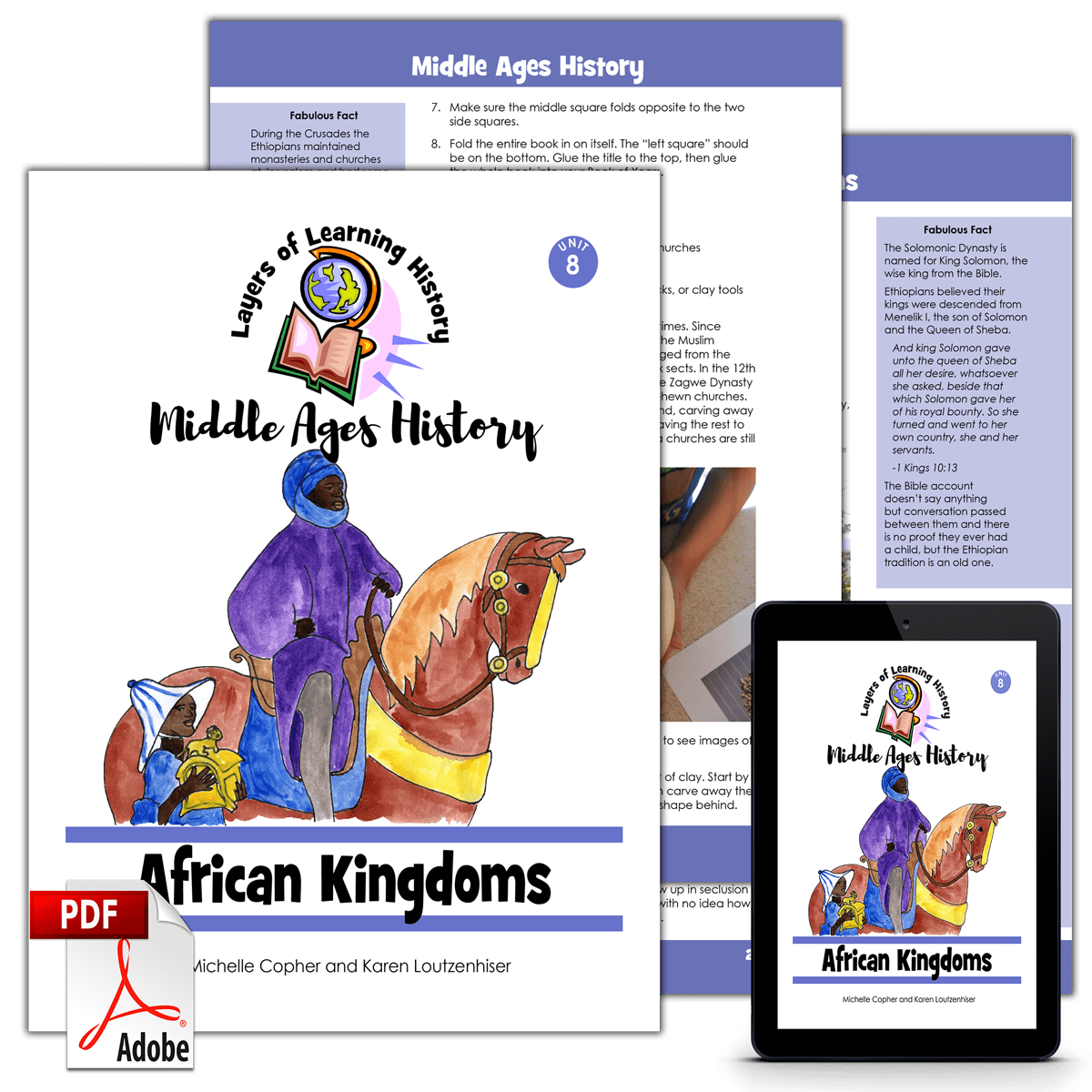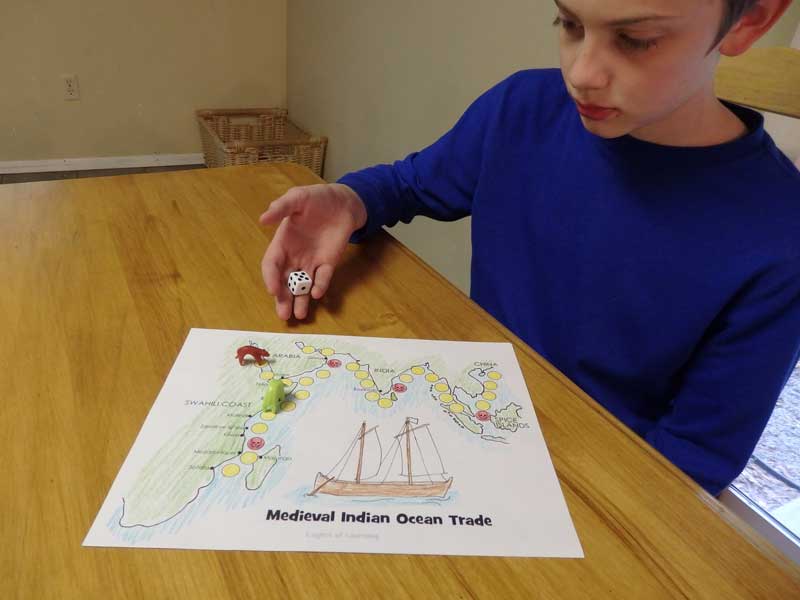This exploration is for all ages, as the colored smilies show. You can play the Medieval Indian Ocean Trade Routes game with your whole family together!




The Indian Ocean Trade Game is from African Kingdoms, which is about sub-Saharan Africa in the middle ages. Printables and games are sprinkled all through Layers of Learning, a hands-on family style curriculum. Learn more about Layers of Learning.
Many cities around the rim of the Indian Ocean, including the east coast of Africa, became fabulously wealthy during the middle ages through the medieval Indian Ocean trade routes. The Swahili coast of Africa had ivory, gold, ebony, sandalwood, and slaves to trade. China had silk and porcelain to get to market in the west. India, at the center of the trade routes got it coming and going, silk from China and ivory and ebony from Africa, and they exported their spices and narcotics. Many city rulers, like the sultan of Aden at the mouth of the Red Sea, demanded tribute for merchant ships to stop in the port. It was mostly Arabs who were the sailors and traders, braving the pirates, storms, and hardships of life at sea to become wealthy by buying and selling.
Step 1: Library Research
Before you begin exploring, read a book or two about the Indian Ocean trade during the middle ages. Here are some suggestions, but if you can’t find these, look for books at your library about Indian Ocean trade, Swahili city-states, or Arab traders. The colored smilies above each book tell you what age level they’re recommended for.
This is a very hard to find topic. You can also read the Wikipedia article Indian Ocean Trade.
As Amazon affiliates, the recommended books and products below kick back a tiny percentage of your purchase to us. It doesn’t affect your cost and it helps us run our website. We thank you!

Juma’s Dhow Race
by Lisa Maria Burgess


Indian Ocean Trade
by Crash Course
Step 2: Indian Ocean Trade Game Exploration
To play the Indian Ocean Trade Game you will need colored pencils, game pieces, a die, and this Indian Ocean Trade Game printable.

Print out the map above by clicking on the link or on the image. Alternatively, you can free-hand draw the map onto a large poster board to make it easier to see and play. Color the map and game spaces with the colored pencils.
Roll a die to travel from Sofala, the southernmost Swahili trade city to the Spice Islands and back. Venture into the Red Sea and the Arabian Sea on your way. Read facts about the Indian Trade, the Arab traders, or the Swahili city-states between turns.

You’ll notice pirates on the map. These spots really were pirate havens back then and captains of trading vessels were especially cautious as they neared these areas, though a pirate could set upon you anyplace. You can make these spaces into penalties like “go back three spaces” or “lose a turn”.

Step 3: Show What You Know
Have your kids each draw their own map with illustrations and captions describing the trade routes of the Indian Ocean during the middle ages. Put the maps into the history section of your Layers of Learning notebook.
Additional Layers
Additional Layers are extra activities you can do or tangents you can take off on. You will find them in the sidebars of each Layers of Learning unit. They are optional, so just choose what interests you.
Writer’s Notebook
Pirates were all over the Indian Ocean, but there were certain places that were especially favorable to pirates. If you were a pirate what would you look for in a good hideout or base of operations?
Write about it in your Writing Journal.
Additional Layer
Learn about the dhow boats used by the Arabs.

Additional Layer
Learn about the slave trade of east Africa. This slave trade had been going on since ancient times and was mostly run by the Arabs. East coast Africans would capture slaves from the interior and then sell them to Arabs who sold them throughout the Muslim world and sometimes in Europe.
Get a Free Unit
Choose between the first unit in each Layers of Learning subject to try for free when you sign up for the newsletter.
We never spam and you can cancel your subscription at any time.






thanks (;
How did they build weapons and armour/shields.
What did they use to cover themselves in war/battle.
This is for a school project
so i had to put like war
related stuff in the comment.
Awesome, Matthew! You may be interested in this website that teaches all about pirates’ weapons. It has a lot of cool stuff you may be interested in! https://www.thepirateking.com/historical/weapons.htm